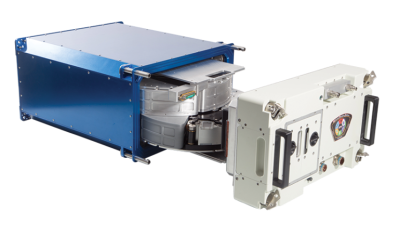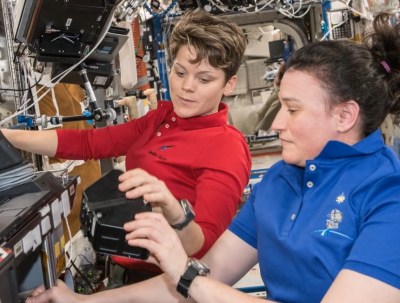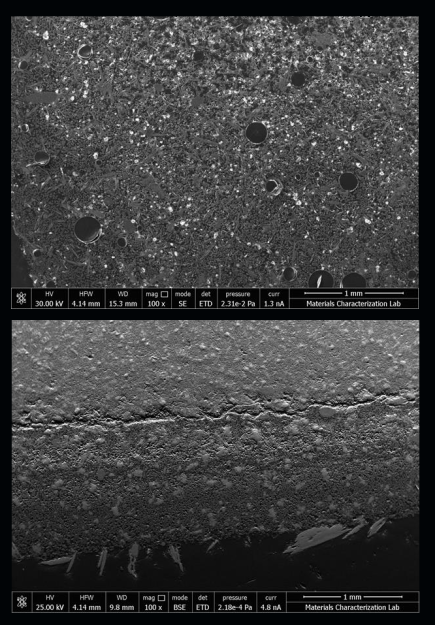If the current Administration of the United States has their way, humans will return to the surface of the Moon far sooner than many had expected. But even if NASA can’t meet the aggressive timeline they’ve been given by the White House, it seems inevitable that there will be fresh boot prints on the lunar surface within the coming decades. Between commercial operators and international competition, we’re seeing the dawn of a New Space Race, with the ultimate goal being the long-term habitation of our nearest celestial neighbor.

But even with modern technology, it won’t be easy, and it certainly won’t be cheap. While commercial companies such as SpaceX have significantly reduced the cost of delivering payloads to the Moon, we’ll still need every advantage to ensure the economical viability of a lunar outpost. One approach is in situ resource utilization, where instead of transporting everything from Earth, locally sourced materials are used wherever possible. This technique would not only be useful on the Moon, but many believe it will be absolutely necessary if we’re to have any chance of sending a human mission to Mars.
One of the most interesting applications of this concept is the creation of a building material from the lunar regolith. Roughly analogous to soil here on Earth, regolith is a powdery substance made up of grains of rock and micrometeoroid fragments, and contains silicon, calcium, and iron. Mixed with water, or in some proposals sulfur, it’s believed the resulting concrete-like material could be used in much the same way it is here on Earth. Building dwellings in-place with this “lunarcrete” would be faster, cheaper, and easier than building a comparable structure on Earth and transporting it to the lunar surface.
Now, thanks to recent research performed aboard the International Space Station, we have a much better idea of what to expect when those first batches of locally-sourced concrete are mixed up on the Moon or Mars. Of course, like most things related to spaceflight, the reality has proved to be a bit more complex than expected.
That you could mix lunar regolith up into a substance that would harden like concrete was never really in question. Chemically it all checks out, and there were even some very promising experiments done with samples returned from the Apollo missions. But while scientists could expose the resulting mixture to a vacuum easily enough, there was no way to study how it would cure in low-gravity environments.

Short of going to the Moon or Mars and trying it in field, the only way to see how extraterrestrial concrete would behave on these worlds is by simulating their gravity in space. Here on the surface of the Earth, there’s no way to lower the force of gravity, but in space you have the luxury of starting from what’s effectively zero. Aboard an orbiting spacecraft, a sample can be placed inside of a centrifuge and spun up to simulate the roughly 17% of Earth’s gravity it would be subjected to on the Moon, or 38% in the case of Mars.
Which is exactly what astronauts aboard the ISS did during the Microgravity Investigation of Cement Solidification (MICS) experiment. Pouches filled with a hydrated cement mixture were placed in the Multi-use Variable-g Platform (MPV), a commercially owned and operated centrifuge that can be run from 0.1 to 2G. Samples were spun up to expose them to artificial gravity equal to what they would experience on the surface of the Moon and Mars, while control samples were left to cure in the normal microgravity environment aboard the ISS.
The impact of varying gravitational strength on curing concrete might not be immediately obvious. Here on Earth the process seems so simple: just mix it up with some water, let it sit out, and in 24 hours or so you have a solid block. To understand the situation better, we first need to look at what concrete actually is, and what’s happening at the microscopic level as it cures.

Firstly, while there’s a tendency to use the terms interchangeably in casual conversation, concrete and cement are not the same thing. Concrete is actually the end result of mixing an aggregate (sand, gravel, etc) with cement, which acts as a binder to hold it all together. Put another way, you can have cement without concrete, but you can’t have concrete without cement. Research performed during the MICS experiment has therefore focused on cement, as that’s the first step towards producing concrete strong enough to actually build a structure.
While curing, two different processes are occurring inside the concrete. The aggregate, being heavier than the cement, has a tendency to slowly sink towards the bottom. At the same time, the cement is crystalizing which “glues” the aggregate in place. Striking a balance between aggregate sedimentation and cement crystallization is key to producing a strong final product, but as both processes are heavily dependent on gravity, the strength of concrete cured in low or zero G has always been a topic of debate.
Researchers from Pennsylvania State University and NASA’s Marshall Space Flight Center are still analyzing the returned cement samples, but so far they’ve already made some very interesting observations. Further experiments will almost certainly be required before any kind of definitive statement can be made, but clearly we’ve got a lot to learn before the first concrete structures can be poured on the surface of the Moon.

The good news is that lower gravity leads to reduced sedimentation. Without Earth’s gravity to pull the heavier material down to the bottom of the mixture, the cured concrete should be of a more uniform density and therefore stronger. It also means that the ratio of aggregate to cement can potentially be increased, resulting in a denser concrete than would normally be possible on Earth.
Unfortunately, the samples also show that the crystalline structure of the space-cured cement is more porous than its terrestrial counterpart. The hardened cement contains voids which are likely due to the fact that air bubbles in the mixture are less likely to rise to the surface under reduced gravity. Future experiments will likely focus on ways to reduce the number of air bubbles that remain in the cement as it cures, potentially via mechanical vibration or exposure to a low-level vacuum. While it might seem that exposing the cement to the total vacuum of space would solve the issue, previous experiments have shown that this causes the water in the mixture to sublimate; with the water drawn out, the curing process stalls and the cement never hardens.
Put simply, the structure of space concrete is nearly the opposite of traditional concrete. On Earth, gravity causes aggregates to sink to the bottom while air bubbles rise to the top. But in reduced gravity, there’s a tendency for everything to stay in suspension. When cured, this results in a material that’s more uniform but considerably less dense than it is on Earth. How this will affect the final strength of the concrete and its usability as a building material off-world is yet to be seen. Until then, affordable housing will remain one of the many challenges of living on the Moon.
Off-World Cement Tested for the First Time
Source: HackADay